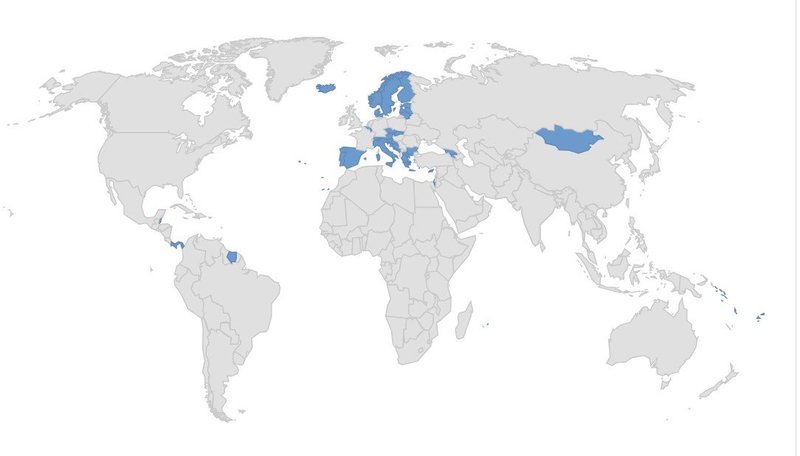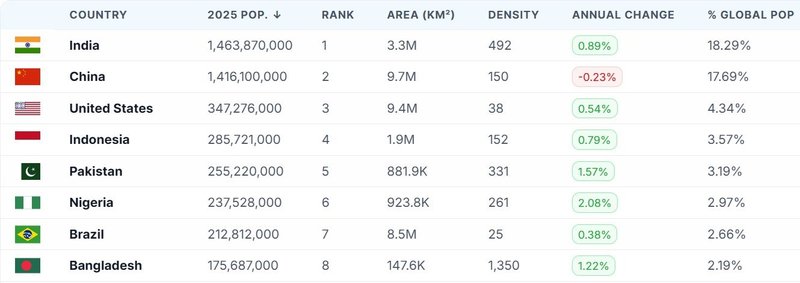First published: Sat 18 Oct 2025.
Els Slots
Countries with too many WHS…
Comments
6 comments
Philipp Peterer
1 month, 1 week ago (Oct 19, 2025)
It probably helps, if a country has been within the territory of several empires, big and powerful enough to leave lasting and monumental infrastructure. Turkey is a good example for that (Greeks, Romans, Ottomans and more smaller ones). Population and land mass are no factor, if most of the time your land was inhabited by nomadic tribes, that left very little behind.
Reply
MoPython
1 month, 1 week ago (Oct 19, 2025)
A few years ago I made a statistic concerning WHS per area and updated it since then. I can share it here. Leaving away all the very small countries (under 1'000 km2), these 15 countries have the most WHS per 10'000 km2:
1. State of Palestine (8.04)
2. Lebanon (5.77)
3. Belgium (5.24)
4. Israel (4.56)
5. Luxembourg (3.87)
6. Cyprus (3.24)
7. Switzerland (3.15)
8. Netherlands, incl. overseas (3.08)
9. Montenegro (2.90)
10. Cabo Verde (2.48)
11. Slovenia (2.47)
12. Czechia (2.16)
13. Italy (2.02)
14. Portugal (1.85)
15. Jamaica (1.82).
So the overall leader Italy holds "only" place 13 and comes way after Belgium by example. Germany would follow on place 20 (1.57), Spain on place 27 (0.99), France (incl. overseas) even on place 34 (0.81).
Big China with it's 60 WHS would come late on place 120 (0.06).
Kyle Magnuson
1 month, 1 week ago (Oct 19, 2025)
Early formation of the state approximately matching territory today. This often has lead to world heritage nominations from various periods and dynasties.
Examples:
Portugal (12th - 13th Century)
Korea (7th - 10th Century)
England (10th - 11th Century)
Astraftis
1 month, 1 week ago (Oct 20, 2025)
I would use density as an estimator, putting together population and size, and then I think we come close to a good representation. Still, this would say that we would expect more WHSs from Nigeria (250), Bangladesh (1333!!!) or even the Netherlands (550) than from Italy (200). And this is because we need to consider it historically: Nigeria and Bangladesh have peaked in recent years, but Italy was comparable more populous for a longer time, so e.g. (looking at Wiki data) in 1860 Nigeria had around or less than 12,5m inhabitants, while Italy 26,5m, and Italy had more than 5m inhabitants even 2000 years ago, while I suspect that Nigeria was pretty much scattered.
So: average population density over the ages should be a very good indicator for places where life conditions are good, where there have always been many people doing and thinking many things and leaving us a good deal of (cultural) heritage continuously through time. For example, the Low Lands were a barren, swampy, difficult area well until the midts of Middle Ages, that's why we don't have much north of the Bavay-Tongeren Roman causeway before the end of the "Dark Ages" :-)
I would also go further and refine the statistics with respect to regions, for the reason that statal entities so often represent a variety of landscapes with very different life conditions. I think of China: population density is 147, so kind of modest with respect to European ones, but then a look at the WHS map makes it clear that they are concentrated in the east and much sparser in Tibet or Sinkiang. It's the east that has been continuously inhabited and very populuous, so it's also why I think that China (and India) are projected to "top the charts" in the future.
Els Slots
1 month, 1 week ago (Oct 20, 2025)
It's an interesting theory, Astraftis! I asked Gemini to compare India and Pakistan on historical population density, and there also it is valid: "No, their population densities have not been similar. For most of the past few centuries, the regions that make up modern India were significantly more densely populated than the regions of modern Pakistan.... Regions of Modern Pakistan: Most of this area, particularly the Indus Valley (Sindh and Punjab) and the arid highlands of Balochistan, was historically sparse. The population was largely concentrated in a few areas along the rivers. This changed dramatically in the late 19th and early 20th centuries"
ZCTLife
1 month, 1 week ago (Oct 21, 2025)
The three countries identified as being the most populous without having any WHS are also among the poorest by per capita GDP. 1/2 of the countries identified as having more than one WHS per 1 million are among the richest countries in the world by per capita GDP.
So, I would argue that the nomination, application and promotion of potential WHS is limited by the wherewithal of each country. Some wealthy countries like the US have bizarre anti-UN political factions or controlling governments that have resulted in opposing UN initiatives, delaying applications, canceling Biospheres, and lack of nominations over decades.
And I think it is unlikely to be a coincidence that the greatest geographical concentration of over-represented countries is in Europe, which houses the HQ of the WHS organization in France. One explanation would be that cultural familiarity and lack of distance gives an advantage to countries that are close enough to establish connections in Paris more easily.



